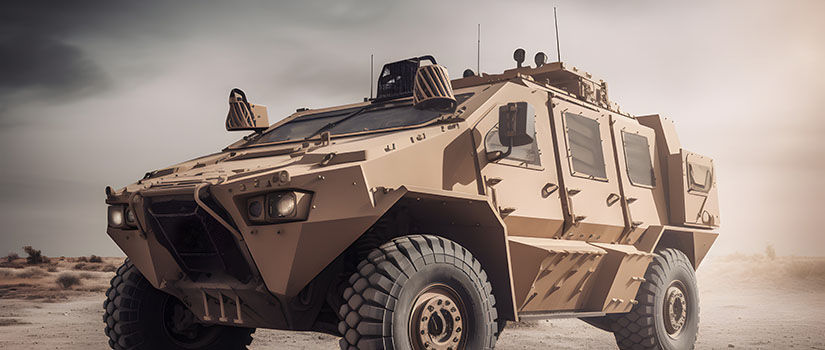Yi Wang develops new reduced order modeling techniques for analyzing military vehicle's infrared signatures.
The effectiveness of military vehicles often depends on the thermal infrared signature, which is used to detect, track, and lock on targets. Thermal and flow modeling and simulation are often used for assessing and controlling infrared signatures of military vehicles for enhanced survivability and performance.
Mechanical Engineering Associate Professor Yi Wang completed a research project this past January that utilized a specialized modeling technique for providing more accurate and efficient prediction of the infrared signatures.
In May 2020, Wang began the second phase of his more than $400,000 research into reduced order modeling (ROM) technologies to replace the traditional computational fluid dynamics (CFD) for fast and accurate flow and thermal analysis of vehicles. The project was funded by the U.S. Army, Department of Defense and CFD Research Corporation. According to Wang, the Army was interested in a tool that could accelerate simulations of the flow and heat transfer of military vehicles for thermal signature generation.
A key part of analyzing ground vehicles is predicting the thermal fields and heat transfer due to fluid motion and environmental radiation. The modeling tools capable of accurately analyzing the effects of weather, environment and vehicle operation, such as ambient temperature and relative wind speed, are important to the Department of Defense for rapid system design, reliable thermal signature management and ultimate mission success.
"Various flow and heat transfer gives different infrared signatures. CFD is the traditional method of running such simulations to account for time-varying weather conditions and environmental changes, but it's time-consuming and could take weeks and even months to reach the quasi-steady state," Wang says. "But our approach is a time saver and achieves orders of magnitude speedups relative to the traditional CFD analysis."
In the first phase of his research, Wang's team developed a thermal and flow ROM for establishing proof of concept and feasibility. The purpose of the second phase was to mature and refine the ROM capabilities in analysis accuracy, computational efficiency and technology insertion. As a low-dimensional model, Wang's ROM only solves an equation set of less than 100 degrees of freedom to accelerate the analysis with the same resolution and fidelity as the CFD, enabling ultrafast thermal signature prediction.
Conversely, a large CFD model can easily produce millions of degrees of freedom and needs to be solved on a dedicated high-performance computing facility. Wang’s research work won a "Best Paper Award" in the 13th Ground Vehicle Systems Engineering & Technology Symposium 2021 organized by the National Defense Industrial Association.
Developed in an integrated framework, Wang's ROM approach includes several key components, such as turbulence modeling, thermal modeling, and online CFD-ROM switch decision maker to automate the coupled analysis under time-varying operating conditions.
"The demands for rapid transient thermal and flow modeling analysis for military ground vehicles have been continuously increasing recently. Because of its salient computing efficiency over the traditional CFD approach, while maintaining almost the same accuracy, ROM has gained significant traction in almost every agency of the Department of Defense," Wang says.
Mechanical engineering doctoral candidate Jacob Rains worked with Wang on the project.
“The speed of these models allows us to make thermal signature predictions in a variety of scenarios. It typically requires up to a week or more to get simulation results for every combination, but our models can reduce that time down to a few seconds,” Rains says. “The ability to make rapid predictions greatly benefits prototype development, design optimization, and real-time simulations in general, and our methods provide that advantage.”
Wang says that he reached the planned outcomes and one of the most important aspects of the project was working and collaborating with federal agencies on cutting-edge research. The partnership with industry was a bonus. The target has always been deployment and real-world applications, and his team and industrial partner have already developed the first-generation of software tool that is currently being tested.
"This was different from many research projects my team conducted before. The biggest reward is that it has a real application and an industrial partner to transition the discoveries and numerical algorithms developed here to defense customers," Wang says. "The next milestone is to integrate and package the ROM technologies and make them more user-friendly for a broader category of Army-relevant applications."
